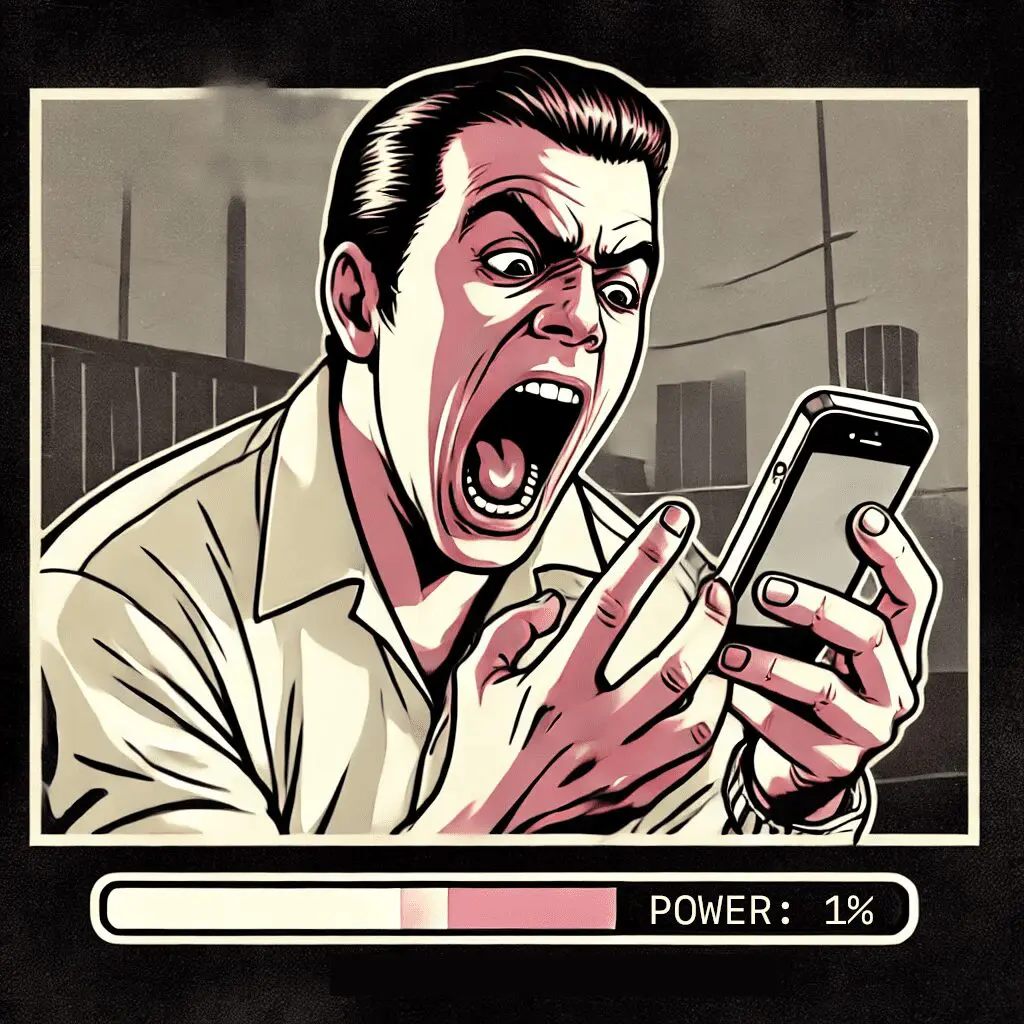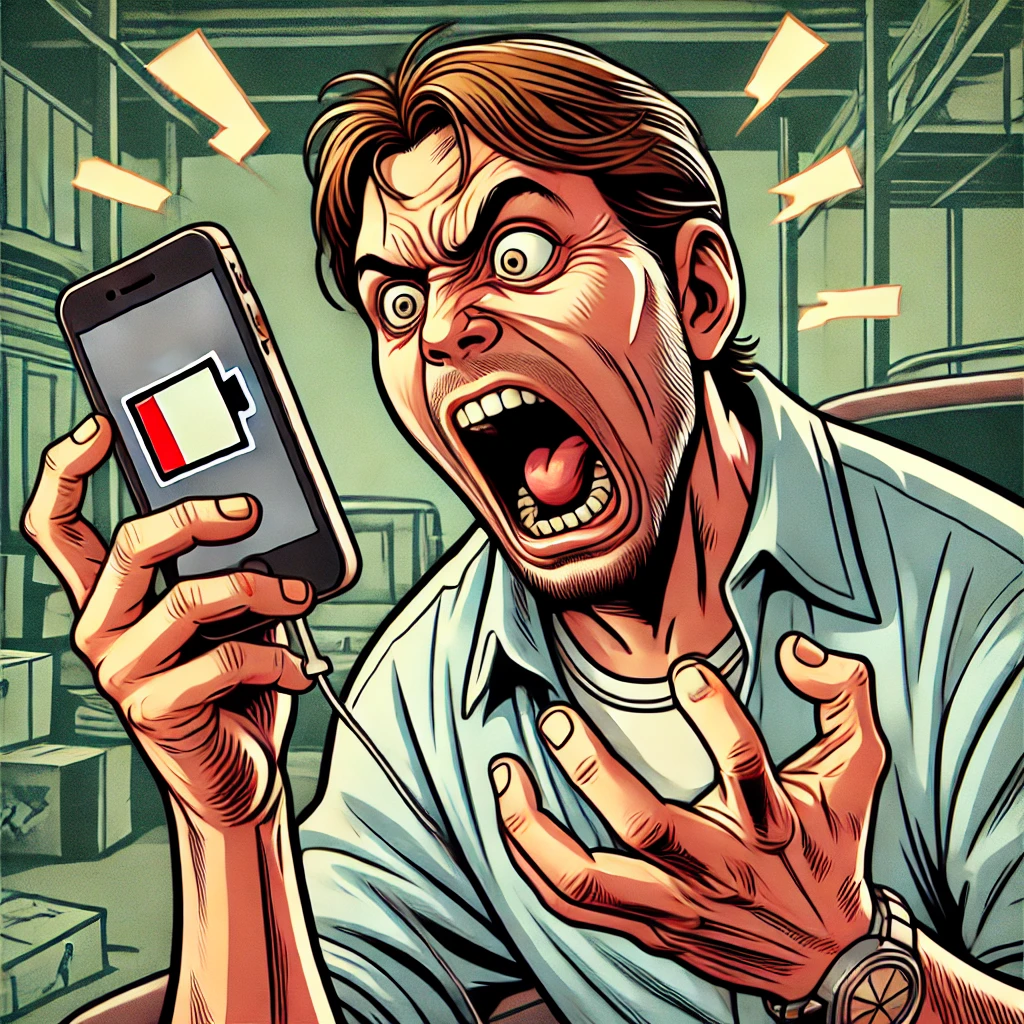
We’ve all been there. You’re down to 2%, you grab your iPhone charger, plug it in, and… nothing. It’s frustrating, it’s confusing, and if you’re like me, it might make you want to throw your phone across the room. But hold on—before you panic, let’s walk through the steps to figure out why your iPhone won’t charge and how you can (hopefully) fix it.
First things first, let’s be honest: sometimes it’s user error. Sometimes it’s the iPhone. Either way, there are a few simple checks and solutions you can try before you head off to the Apple store, credit card in hand.
Start with the Basics: Is Everything Plugged In Correctly?
I know this sounds like the most obvious thing in the world, but I can’t count the number of times I’ve freaked out over a phone not charging, only to realize the charger wasn’t properly plugged into the wall. So, humor me here and check that:
- The power outlet is working (try plugging in something else to double-check).
- Your charger is fully plugged into the wall or your USB port.
- Your charging cable is securely connected to your phone. Sometimes it might look like it’s plugged in, but it’s not really seated correctly.
Now, if everything seems properly connected and you’re still not getting any juice, let’s move on to the next step.
Inspect the Cable and Adapter
Your charging cable and adapter are often the culprits. Cables go through a lot—getting yanked, bent, stepped on, and sometimes even chewed up by pets (no judgment). So, take a close look at your charging cable and the adapter. Are there any visible signs of damage? Frayed wires, bent connectors, or discoloration? If your cable looks like it’s been through a war zone, it’s time to replace it.
Try a Different Cable and Adapter
If the cable looks okay but your phone still isn’t charging, the next logical step is to try a different cable and adapter. Preferably, use an official Apple charging cable or a certified MFi (Made for iPhone) cable from a reputable third-party brand. Non-certified cables can sometimes cause charging issues, or worse, damage your phone.
Pro tip: If you have a newer iPhone with wireless charging capability, give that a try. Place your iPhone on a wireless charging pad (if you have one) to see if it charges. If it does, you can narrow down the problem to either the cable or the charging port.
Check Your Charging Port (Seriously, It Gets Dirty!)
The charging port is another common troublemaker when your iPhone won’t charge. The port can collect dust, lint, and other debris over time, especially if you tend to keep your phone in your pocket or bag. If this gunk gets in the way, your cable might not be able to fully connect with the charging pins.
Here’s what you can do:
- Grab a flashlight and take a good look inside the port. Do you see any dirt or lint in there?
- If you see something, use a small, soft brush or a toothpick to gently clean it out. Do NOT use anything metal, as this can damage the internal components. Be careful, and don’t go jamming anything in there.
Once the port is clean, plug your charger back in and see if the issue is resolved. If not, let’s move on to more technical solutions.
Restart Your iPhone
Sometimes your iPhone just needs a good old-fashioned restart. If you haven’t restarted your phone in a while, it might be having a software glitch that’s affecting the charging process. Here’s how you can restart your iPhone:
- For iPhones with Face ID (iPhone X and newer): Press and hold the side button and either volume button until you see the power-off slider. Drag the slider to turn off your phone, wait a few seconds, then press the side button again to turn it back on.
- For iPhones with a Home Button (iPhone 8 and earlier): Press and hold the top (or side) button until the power-off slider appears. Drag it to turn off your phone, then press the top button again to turn it back on.
After your phone restarts, plug in your charger and see if it’s working. If it still won’t charge, we’re getting into deeper territory now.
Update Your iPhone’s Software
I know, software updates can be a pain. But sometimes, not charging is a sign that your iPhone’s software is outdated. If your phone’s iOS is behind, it might not communicate correctly with your charger, especially if you’re using third-party accessories. Here’s how to check for updates:
- Go to Settings.
- Tap General.
- Select Software Update.
- If an update is available, tap Download and Install.
Once your phone is updated, try charging it again. Sometimes a software refresh is all it needs.
Force Restart (When a Normal Restart Isn’t Enough)
If your phone isn’t responding at all—like it’s completely dead and not turning on or charging—you might need to force restart it. This is a more powerful reset that can sometimes shake loose software issues preventing your phone from charging. Here’s how to do it:
- For iPhone 8 and newer: Press and quickly release the volume up button, then press and quickly release the volume down button. Then, press and hold the side button until the Apple logo appears.
- For iPhone 7 and 7 Plus: Press and hold both the volume down button and the side (or top) button at the same time until the Apple logo appears.
- For iPhone 6s and earlier: Press and hold both the home button and the side (or top) button until the Apple logo appears.
Once it restarts, plug in your charger and check if it’s working. If it’s still dead in the water, we’ve got to dig even deeper.
Inspect for Water Damage
Let’s talk about water damage. I’m going to be blunt: if your iPhone got wet recently and isn’t charging, water damage is a likely cause. Even though newer iPhones are advertised as “water-resistant,” they’re not completely waterproof, and if water got into your charging port, you could be in trouble.
Here’s what you can do if you suspect water damage:
- Don’t plug your phone in if you think there’s still moisture in the port. Plugging it in too soon could fry the internals.
- Let your phone air dry, ideally with the port facing down to allow any water to drain out. If possible, leave it in a dry, ventilated area for at least 24 hours before attempting to charge it again.
- Some people swear by using silica gel packets (the little packets you find in shoe boxes) to help absorb moisture. Place your iPhone in a container with a few packets and leave it for a day or so. Don’t use rice—it’s a myth and can make things worse by leaving grains inside the port.
If your phone still won’t charge after drying out, water damage might be more serious than just the port, and you may need professional help.
Try a Different Power Source
Another simple trick is to try charging your iPhone using a different power source. Sometimes the problem isn’t with your phone at all—it could be with the outlet or USB port. Try plugging your phone into a different outlet, or try charging it from a computer’s USB port or even a portable battery pack.
If your iPhone starts charging with a different power source, you know the issue is with your original outlet or power strip. But if your phone won’t charge anywhere, you’re looking at a hardware or software issue.
Is It a Software Bug or Hardware Issue?
If you’ve tried everything I’ve mentioned so far and your phone still won’t charge, we’re getting into more serious territory. The issue could be a software bug, a glitch, or a hardware malfunction. At this point, you have a couple of options.
Option 1: Restore Your iPhone
Before you panic, restoring your iPhone might fix a deep software issue causing the charging problem. But this is a last resort because restoring will wipe all the data on your phone, so make sure you have a backup before proceeding. Here’s how to restore your iPhone using iTunes (or Finder if you’re on macOS Catalina or later):
- Connect your iPhone to your computer using a charging cable.
- Open iTunes or Finder.
- Select your iPhone when it appears in iTunes or Finder.
- Click Restore iPhone and follow the prompts to complete the process.
Once the restore is complete, check to see if your phone charges. If this still doesn’t fix the issue, we’ve exhausted the DIY fixes.
Option 2: Hardware Repair
If you’ve ruled out software issues, the problem is likely hardware-related. Unfortunately, this could mean your iPhone’s battery, charging port, or logic board is damaged. At this point, you’ll need professional help to diagnose and fix the issue.
Here’s what you can do:
- Contact Apple Support: They can run diagnostics remotely and let you know if it’s something fixable at home or if you need to visit an Apple Store.
- Visit an Apple Store or Authorized Repair Shop: If your phone is under warranty or AppleCare+, you might be able to get it repaired for free or at a reduced cost. Be prepared for the possibility that the repair could be costly if it’s a hardware issue, like the battery or logic board.

Prevention Tips: Keep Your iPhone Charging Smoothly
Once you get your charging issue resolved, here are a few tips to prevent future problems:
- Use Official or Certified Accessories: Stick to Apple chargers or MFi-certified cables to avoid compatibility issues.
- Keep the Charging Port Clean: Regularly inspect and clean the charging port to avoid debris buildup.
- Don’t Overbend Your Cable: Avoid bending the cable too much, especially at the ends. This is where most wear and tear happens.
- Be Mindful of Moisture: Keep your phone dry, and if it gets wet, dry it thoroughly before attempting to charge.
Final Thoughts: Don’t Panic, Just Troubleshoot
If your iPhone won’t charge, don’t immediately assume the worst. Sometimes it’s something as simple as a dirty charging port, a worn-out cable, or a software glitch. By systematically troubleshooting the issue, you can often figure out what’s wrong and fix it without having to spend money on a repair. However, if the problem persists after trying these steps, it might be time to seek professional help.
But hey, at least now you’ll know you did everything you could!

